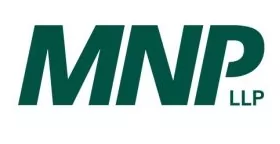It is more and more common for an employer to ask a U.S.-based employee to work in a foreign country. When that employee works in the foreign country, they are often (but not always) subject to that country's tax.
Foreign countries have different personal and social security tax regimes than the United States. They can be more or less expensive than U.S. tax.
Since the employee is often a U.S. citizen or resident, they are still subject to U.S. tax, even on their foreign-source income. This means that both tax regimes apply. The United States has a few mechanisms to mitigate double taxation, but the total tax can still be higher than it would be if the employee continued to work in their home jurisdiction.
Most other advanced nations, including Canada, have higher personal taxes than the United States does. Employers recognize that many employees would not accept foreign assignments if it meant they would have to pay those higher taxes. Consequently, most employers who move U.S.-based employees provide tax 'equalization' or tax 'protection'.
Tax equalization means that the employee's pay is adjusted up or down so that their after-tax income is no different than it would have been had the employee remained working under their original conditions.
Tax protection is essentially the same thing, except there is no adjustment downwards. This would be only an issue where the tax in the foreign jurisdiction is lower than it is at home.
The calculation
The equalization calculation is a fairly complicated, because it is sometimes hard to determine what the tax would be at home (this is called "hypothetical tax"). The hypothetical tax is compared with the actual tax to determine a difference. The employer then pays the difference to the employee.
But that's not the end of the story. That difference payment is itself taxable, always for U.S. purposes and often for foreign purposes. So that amount has to be equalized – and so on...
Equalization policy
There's more. Employers have to decide things like what income will be equalized. Equalizing the employee's employment income is standard. But what if the employee has other sources of income – interest, dividends, rental, capital gains, etc.? Sometimes the foreign country taxes these things too. Should they be equalized?
What if the employee stops contributing to the U.S. retirement plan, and / or starts contributing to a foreign plan? Sometimes the foreign plan is not tax efficient for an American. What if there is no foreign company plan, but there are individual plans available (say, an equivalent to an IRA)?
What if an employee's spouse moves as well? Should the spouse's income be equalized?
There are many more questions that an employer has to decide. Experienced companies have robust policies. But smaller companies that are new to the employee transfer game can make expensive mistakes.
An introduction to equalization, the hard way
A typical scenario is one where a company expands from the United States into Canada. A trusted, up-and-coming, mid-level or senior employee is transferred to Canada. Nobody considers the tax issue until Canadian withholding starts. It's much higher than U.S. withholding, so the employee asks the employer for help. The employer says something like, "Don't worry, we'll take care of you and make it the same as it would be if you were still in the States."
Canadian tax rates are high. The employer then consults with us and learns the cost of equalization is considerably greater than was originally anticipated. There's the equalization cost and the cost of the calculation. Sometimes the calculation needs to be done in advance, not just after the tax returns are finished. That's twice the cost.
In order to avoid unanticipated costs, it is strongly recommended you work with your tax professional up front, so you know exactly what you're facing as you expand your activities to Canada.
The content of this article is intended to provide a general guide to the subject matter. Specialist advice should be sought about your specific circumstances.

